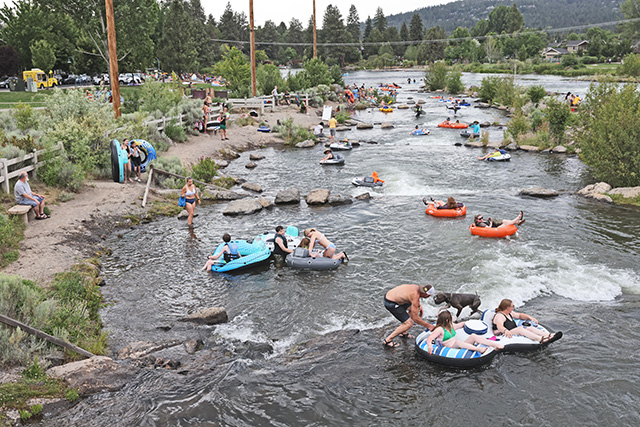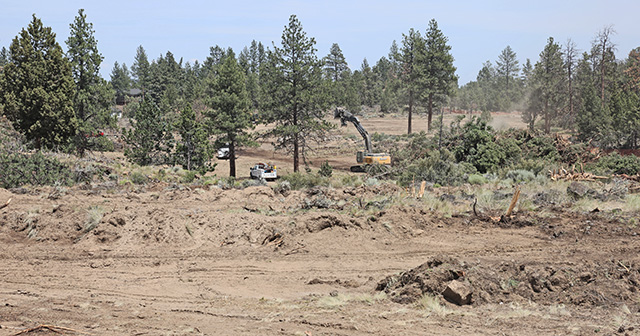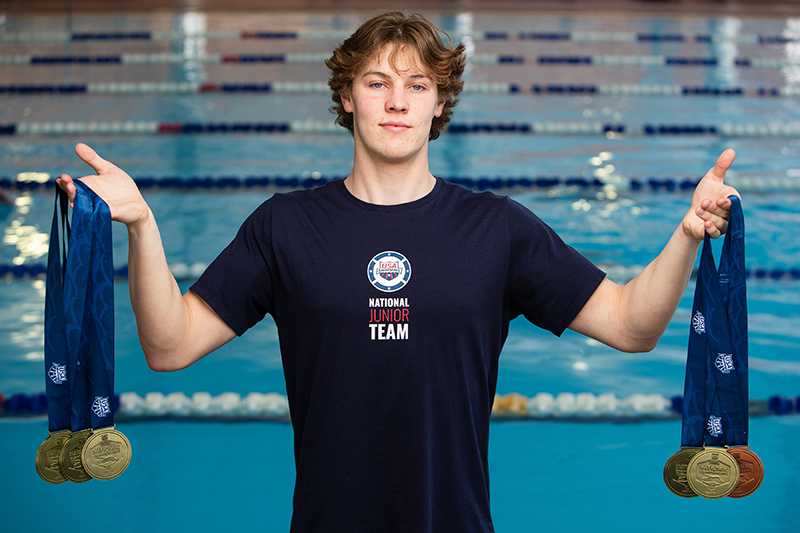In search of the big brown
Published 5:00 am Thursday, July 29, 2004
For those seeking to hook into a lunker brown trout, the most popular destinations are Paulina Lake, East Lake and Wickiup Reservoir.
According to Karen Brown at Paulina Lake Lodge, the largest brown trout taken at the lake this year weighed 12 pounds, 1 ounce. There have also been four or five other fish caught that weighed more than 10 pounds.
”It’s been a pretty average year so far in terms of catching browns,” she said. ”Trolling Rapalas using downriggers has accounted for most of the big fish.”
She added that the kokanee fishing has been picking up lately as well.
”Paulina Lake and East Lake have a quality population of fish, and the scenery is second to none,” said John Hofferd, who has been fishing at both lakes for more than 50 years.
In 1998, Hofferd caught the third largest brown to come out of Paulina Lake at 24 pounds. He believes there’s browns in both lakes over 40 pounds and possibly even 50 or 60 pounds. His best catch at East Lake weighed 16 pounds, 2 ounces. The record brown from East Lake weighed 22 pounds.
So what makes these volcanic lakes so good for brown trout? Both lakes have tremendous food sources for browns, including kokanee, chubs and crawfish. A 10-pound brown that Hofferd caught had three kokanee in its stomach that measured 7 or 8 inches long.
Kokanee are definitely a treasured food item on the brown trout’s list. Hofferd has watched some interesting behavior on his fish finder numerous times when browns begin feasting on kokanee.
”I’ve seen schools of kokanee with big browns laying directly below them,” Hofferd explained. ”Things will be calm for a while, then the school will begin to break up and you can see the browns move in amongst them.”
He’s seen schools rise to the surface with some kokanee even breaking out of the water. Oftentimes, there are air bubbles on the surface from the exploding air bladders of kokanee after coming up from the depths of the lake with a brown in pursuit. There can also be an oily, fishy scent on the surface from kokanee being eaten, Hofferd explained. Occasionally, anglers get the opportunity to see big browns roll on the surface chasing their prey.
The first and last few weeks of the season have historically been good times to target large browns.
”They still are,” said Hofferd, ”however, with downriggers coming onto the scene, I predict the next state record will come during the summer months.”
He prefers July, August and into mid-September when the fish are getting ready to spawn and feed heavily before winter.
He said the use of downriggers in conjunction with lures is critical in catching trophy browns in the summer. It can allow anglers to fish all day, while the typical flat-line trolling occurs in early morning and late afternoon. Browns can be caught from one foot to more than 100 feet below the surface. Hofferd caught one at 120 feet deep. He’s seen them on the screen as deep as 220 to 240 feet. Paulina Lake is 250 feet deep while East Lake is 200 feet deep.
Anglers need to present their lure above the fish, around 8 to 10 feet, since the fish are always looking up for their prey. The most popular lures for browns are Rapalas, broken-back and regular. Hofferd uses broken-backs when the water is colder in order to present a slow moving lure with lots of action. Others prefer big Flatfish in sizes 14 and 15 in silver and chartreuse.
Hofferd has taken six browns of more than 10 pounds from the lakes, including an 11-pound, 2-ouncer at Paulina a few years ago. In 1965, a 35-pound, 8-ounce brown was netted at the lake. An angler hooked it earlier but the monster brown broke the line and it wallowed up on shore later, not an official state record.
The state record brown trout came from Paulina Lake and weighed 28 pounds, 5 ounces. It was caught Oct. 3, 2002, on a 7-inch AC Plug in a rainbow pattern. The fish broke the former state record by 9 ounces and measured 37 inches long.
East Lake has been a favorite fishing destination for many anglers and guides this year. According to Tony Graham, manager of East Lake Resort, a 14-pound and a 16-pound brown were taken from the lake recently.
”One group the other day caught a 29-inch, a 28-inch, a 27-inch and a 23-inch brown while trolling worms,” he reported. ”Just like ole Huck Finn.”
Graham said he saw photos of a fly angler with an 8-pound brown, which is a big fish to be caught on a fly. He said others are having luck trolling broken-back Rapalas, while others are using shad-wraps. Anglers are catching fish all day long, he said.
”We had a hot lake last year, in terms of fishing action, and I think we have even a hotter lake this year,” Graham said. ”The fly anglers are catching between 40 and 70 fish a day now.”
As far as bug hatches, he reports four hatches a day of calibaetis, one of midge, another of blue dun, one of mayfly and one of dragonfly. ”The fish are having a frenzy up here,” he said. ”Even inexperienced fly anglers are having a blast.”
One reason the fishing is so good at the two lakes in Newberry Crater is the state’s excellent stocking program. The Oregon Department of Fish and Wildlife has been stocking both lakes with 10,000 brown trout fingerlings (about 6 inches long) consistently for the last 10 years and intermittently since the 1940s.
Steve Marx, fish biologist with ODFW in Bend, has photos of a 30-pound brown taken from East Lake in 1952 during surveys. He said it would take about nine or 10 years for a fingerling to get that large.
”Paulina and East lakes are still very good for brown trout because they are natural lakes and have consistent water levels and production,” Marx said.
Twin Lakes Resort reported the largest brown trout taken at Wickiup this year weighed 13 pounds, 8 ounces and measured 35 inches long. There have also been several fish over 10 pounds caught. Most anglers use Rapalas and Flatfish. Best fishing is early morning and just before sundown. Wickiup Reservoir is one of the more popular high Cascade lakes targeted for brown trout.
In Wickiup, most anglers target browns in the main reservoir and the Deschutes Arm fishing from boats and shore. The fish will hit Rapalas, worms, Power Bait and dragonfly nymphs. Later in the summer the browns will move up into the Deschutes Arm to feed on kokanee.
According to Marx, Wickiup has slid the last couple of years for brown trout due mainly to the low water cycle. This has affected the number of juvenile kokanee that the trout feed on, which is their primary food source. There is also a high abundance of brown bullhead in the reservoir that were illegally stocked. These fish compete for food and habitat with young trout. The reservoir receives an annual stocking of 6,000 brown trout fingerlings.
In recent years, the reservoir has given up a 25-pound brown and a 10-pound rainbow. Twin Lakes Resort keeps a list of the largest fish caught in the reservoir each year. Boat rentals are available at all three locations at the respective lake resorts.
Even a brown weighing a few pounds will put up a strong fight on the end of the line. For anyone seeking to feel the tug of one of these trout, head to a high Cascade Lake near you.







